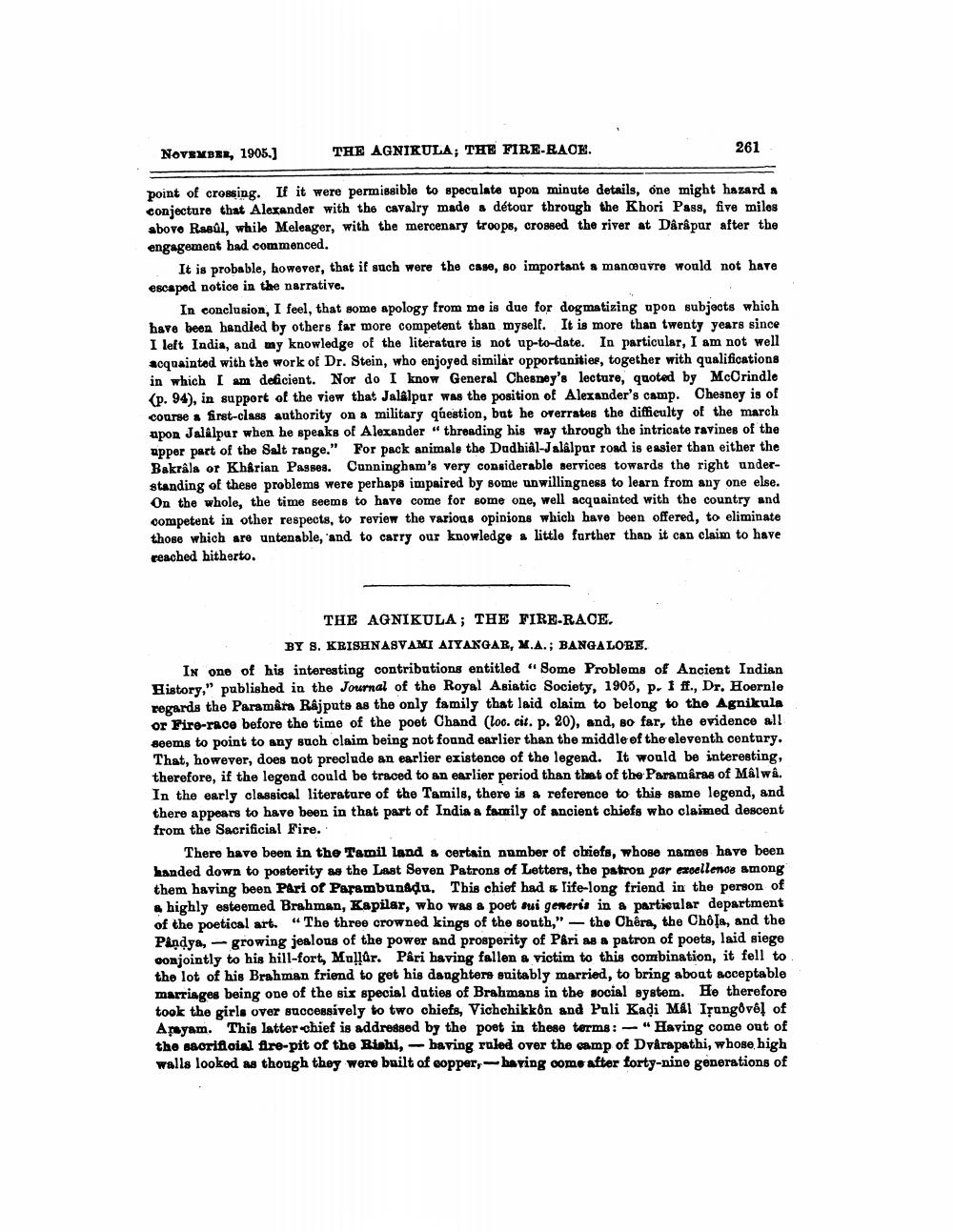________________
261
NOVEMBER, 1905.]
THE AGNIKULA; THE FIRE-RACE.
point of crossing. If it were permissible to speculate upon minute details, one might hazard a conjecture that Alexander with the cavalry made a détour through the Khori Pass, five miles above Rasûl, while Meleager, with the mercenary troops, crossed the river at Dârâpur after the engagement had commenced.
It is probable, however, that if such were the case, so important a manoeuvre would not have escaped notice in the narrative.
In conclusion, I feel, that some apology from me is due for dogmatizing upon subjects which have been handled by others far more competent than myself. It is more than twenty years since I left India, and my knowledge of the literature is not up-to-date. In particular, I am not well acquainted with the work of Dr. Stein, who enjoyed similar opportunities, together with qualifications in which I am deficient. Nor do I know General Chesney's lecture, quoted by McCrindle (p. 94), in support of the view that Jalalpur was the position of Alexander's camp. Chesney is of course a first-class authority on a military question, but he overrates the difficulty of the march upon Jalalpur when he speaks of Alexander "threading his way through the intricate ravines of the upper part of the Salt range." For pack animale the Dudhiâl-Jalalpur road is easier than either the Bakråla or Kharian Passes. Cunningham's very considerable services towards the right understanding of these problems were perhaps impaired by some unwillingness to learn from any one else. On the whole, the time seems to have come for some one, well acquainted with the country and competent in other respects, to review the various opinions which have been offered, to eliminate those which are untenable, and to carry our knowledge a little further than it can claim to have reached hitherto.
THE AGNIKULA; THE FIRE-RACE.
BY S. KRISHNASVAMI AIYANGAR, M.A.; BANGALORE.
In one of his interesting contributions entitled "Some Problems of Ancient Indian History," published in the Journal of the Royal Asiatic Society, 1905, p. 1 ff., Dr. Hoernle regards the Paramara Rajputs as the only family that laid claim to belong to the Agnikula or Fire-race before the time of the poet Chand (loc. cit. p. 20), and, so far, the evidence all seems to point to any such claim being not found earlier than the middle of the eleventh century. That, however, does not preclude an earlier existence of the legend. It would be interesting, therefore, if the legend could be traced to an earlier period than that of the Paramaras of Malwâ. In the early classical literature of the Tamils, there is a reference to this same legend, and there appears to have been in that part of India a family of ancient chiefs who claimed descent from the Sacrificial Fire.
There have been in the Tamil land a certain number of chiefs, whose names have been handed down to posterity as the Last Seven Patrons of Letters, the patron par excellence among them having been Pari of Parambunâḍu. This chief had a life-long friend in the person of a highly esteemed Brahman, Kapilar, who was a poet sui generis in a particular department of the poetical art. "The three crowned kings of the south," the Chêra, the Chôla, and the Pandya, growing jealous of the power and prosperity of Pâri as a patron of poets, laid siege conjointly to his hill-fort, Mullûr. Pâri having fallen a victim to this combination, it fell to the lot of his Brahman friend to get his daughters suitably married, to bring about acceptable marriages being one of the six special duties of Brahmans in the social system. He therefore took the girls over successively to two chiefs, Vichchikkôn and Puli Kadi Mál Irungôvėl of Arayam. This latter chief is addressed by the poet in these terms: "Having come out of the sacrificial fire-pit of the Rishi, - having ruled over the camp of Dvårapathi, whose high walls looked as though they were built of copper, having come after forty-nine generations of
-




